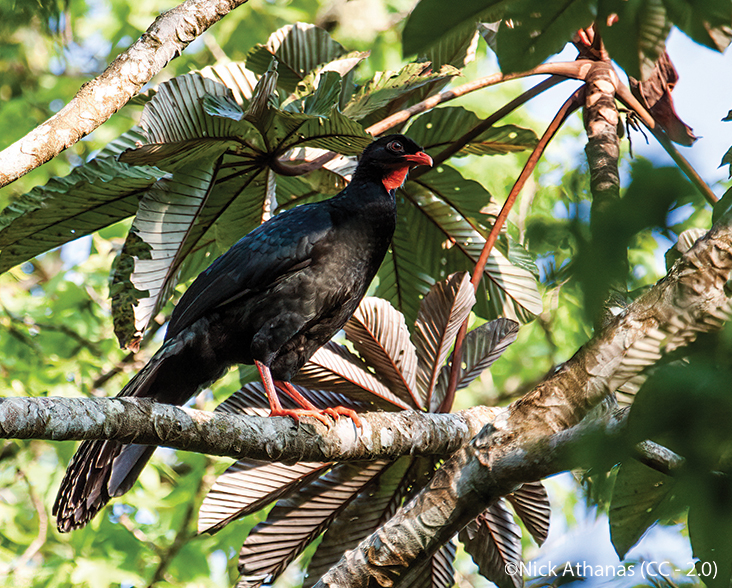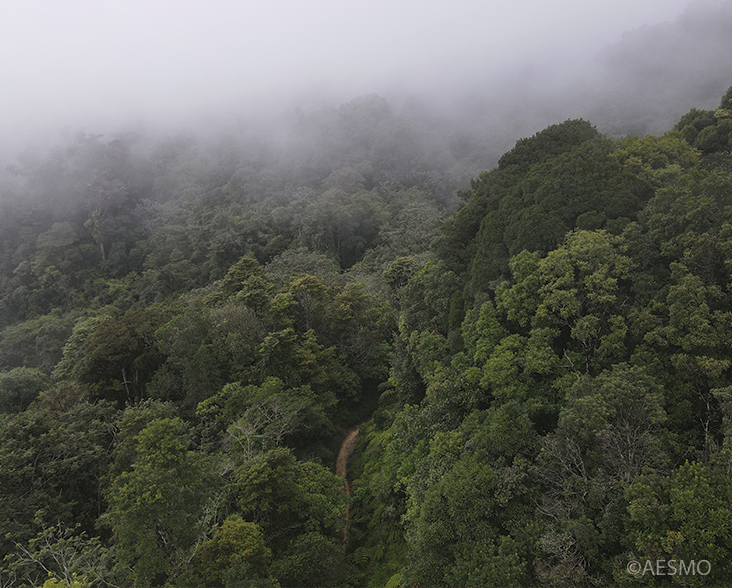Highland Guan
Species Data
Class: Aves
Order: Galliformes
Family: Cracidae
Scientific Name: Penelopina nigra
IUCN Red List status: Vulnerable
Description
This long-tailed game bird measures at about 59-65 cm in size. Adult males are glossy black and have bright red legs, beak and throat wattle. The iris of the eye is reddish-brown, with reddish-brown or purple bare skin around and behind the eye. Females in comparison are larger, with a mottled brown colouring and heavily barred reddish-brown and cinnamon feathers. They too have a red beak but lack the throat wattle.
Highland Guans can be confused with the much larger Crested Guan (Penelope purpurascens) which also has a red wattle and occurs in some cloud forests, but the Highland Guan lacks the white streaking found on the breast in this similar species.
Behaviour
The Highland Guan is mostly seen high in trees, where it can move quickly and easily slip out of view.
They forage either singly, in pairs or small groups, often at twilight, feeding on berries and other fruits from the upper forest canopy to the forest floor. Invertebrates and small vertebrates are also commonly eaten.
In spring, during the breeding season, the male will perch on branches in the upper forest and give a piercing, far-carrying whistle as part of its territorial display. It often alternates this with a crackling rattle which is produced by the vibration of its wing feathers while gliding between perches in a display flight.
Highland Guan nests are quite large, usually situated between ground level and 13m above ground, with clutches typically consisting of two eggs.


Habitat
This species inhabits humid premontane and montane broad-leaved forests in the Pacific and Caribbean slopes of south Mexico, as well as Guatemala, Honduras, north-central Nicaragua and El Salvador. Its habitat is mainly cloud forest and pine-oak forest, but it has also been observed in secondary forests and plantations.
Threats and Conservation
The most recent estimate places the global population of mature individuals at less than 50,000, although this figure is declining rapidly.
The Highland Guan’s once relatively large population has undergone this rapid decline due to habitat loss and degradation, with forest being cleared for agriculture, particularly coffee plantations and maize fields. This is projected to continue into the future. For this reason, the species is categorised as Vulnerable on the IUCN Red List.
Further to habitat alteration and loss, another principal threat is hunting pressures which are also increasing due to an expanding human population within the species’ range.
